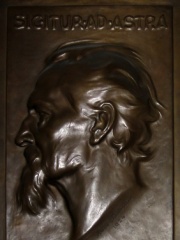
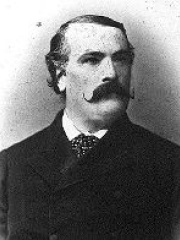
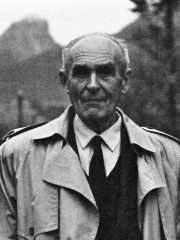

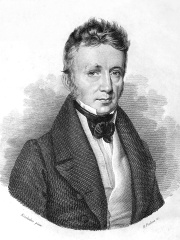
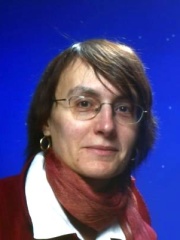
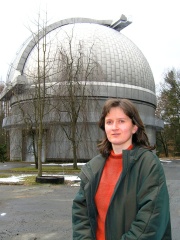
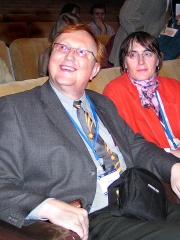
The Most Famous
ASTRONOMERS from Czechia
This page contains a list of the greatest Czech Astronomers. The pantheon dataset contains 644 Astronomers, 11 of which were born in Czechia. This makes Czechia the birth place of the 11th most number of Astronomers behind Poland, and Canada.
Top 10
The following people are considered by Pantheon to be the top 10 most legendary Czech Astronomers of all time. This list of famous Czech Astronomers is sorted by HPI (Historical Popularity Index), a metric that aggregates information on a biography's online popularity. Visit the rankings page to view the entire list of Czech Astronomers.

1. Johann Palisa (1848 - 1925)
With an HPI of 74.05, Johann Palisa is the most famous Czech Astronomer. His biography has been translated into 49 different languages on wikipedia.
Johann Palisa (6 December 1848 – 2 May 1925) was an Austrian astronomer, born in Troppau, Austrian Silesia, now Czech Republic. He was a prolific discoverer of asteroids, discovering 122 in all, from 136 Austria in 1874 to 1073 Gellivara in 1923. Some of his notable discoveries include 153 Hilda, 216 Kleopatra, 243 Ida, 253 Mathilde, 324 Bamberga, and the near-Earth asteroid 719 Albert. Palisa made his discoveries without the aid of photography, and he remains the most successful visual (non-photographic) asteroid discoverer of all time. He was awarded the Valz Prize from the French Academy of Sciences in 1906. The asteroid 914 Palisana, discovered by Max Wolf in 1919, and the lunar crater Palisa were named in his honour.

2. Theodor von Oppolzer (1841 - 1886)
With an HPI of 64.27, Theodor von Oppolzer is the 2nd most famous Czech Astronomer. His biography has been translated into 22 different languages.
Theodor von Oppolzer (26 October 1841 – 26 December 1886) was an Austrian astronomer and mathematician of Bohemian origin. The son of the physician Johann Ritter von Oppolzer, Theodor was born in Prague. He completed his graduate studies in medicine at the University of Vienna, gaining a Ph.D. in 1865. He also owned a private observatory. He began teaching theoretical astronomy and geodesics at the University of Vienna in 1866. By 1875 he was appointed a professor. In 1873 he became the director of the Austrian Geodetic Survey, and in 1886 he was elected vice president of the International Geodetic Association. He was considered a highly capable astronomer and mathematician. For example, he was reputed to have memorized the values of 14,000 logarithms. In 1868 he led an expedition to observe a solar eclipse. Afterward (1887) he authored the Canon der Finsternisse, an authoritative compilation of the 8,000 solar and 5,200 lunar eclipses from 1,200 B.C. until 2,161 A.D. This was widely recognized as one of the greatest computational feats of its day. Oppolzer authored over 300 papers, with most concerning the orbital elements of comets and asteroids. He also published a two-volume manual on the determination of the orbital elements of comets and planets. Both of his works served as standard astronomy references for many years. He was working on an improved theory of lunar motion at the time of his death. His son Egon von Oppolzer also became a distinguished astronomer. He startet to build the Historic Observatory of the University of Innsbruck.

3. Antonín Mrkos (1918 - 1996)
With an HPI of 63.41, Antonín Mrkos is the 3rd most famous Czech Astronomer. His biography has been translated into 28 different languages.
Antonín Mrkos (Czech pronunciation: [ˈantoɲiːn ˈmr̩kos]) (27 January 1918 – 29 May 1996) was a Czech astronomer.

4. Luboš Kohoutek (1935 - 2023)
With an HPI of 61.44, Luboš Kohoutek is the 4th most famous Czech Astronomer. His biography has been translated into 32 different languages.
Luboš Kohoutek (Czech pronunciation: [ˈkoɦou̯tɛk]; 29 January 1935 – 30 December 2023) was a Czech astronomer and a discoverer of minor planets and comets, including Comet Kohoutek which was visible to the naked eye in 1973. He also discovered a large number of planetary nebulae.
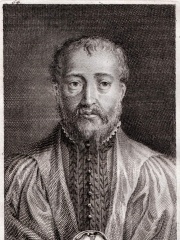
5. Tadeáš Hájek (1525 - 1600)
With an HPI of 58.46, Tadeáš Hájek is the 5th most famous Czech Astronomer. His biography has been translated into 15 different languages.
Tadeáš Hájek of Hájek (Czech: Tadeáš Hájek z Hájku, Czech pronunciation: [ˈtadeaːʃ ˈɦaːjɛk ˈzɦaːjku]; 1 December 1525 – 1 September 1600), also known by Latinized names Thaddaeus Hagecius ab Hayek and Thaddeus Nemicus, was a Czech naturalist and astronomer. He was a personal physician of the Holy Roman Emperor Rudolf II and an astronomer in the Kingdom of Bohemia.

6. Joseph Johann von Littrow (1781 - 1840)
With an HPI of 58.43, Joseph Johann von Littrow is the 6th most famous Czech Astronomer. His biography has been translated into 20 different languages.
Joseph Johann von Littrow (13 March 1781, Horšovský Týn (German: Bischofteinitz) – 30 November 1840, Vienna) was an Austrian astronomer. In 1837, he was ennobled with the title Joseph Johann Edler von Littrow. He was the father of Karl Ludwig Edler von Littrow. He became director of the Vienna Observatory in 1819. He served in this position until his death in 1840. He created the only conformal retroazimuthal map projection, which is known as the Littrow projection. Littrow authored the widely read Wunder des Himmels ("Miracles of the Sky"), which was reprinted eight times by 1897. In 1810, his work took him to Russia for six years. He taught at the Kazan University and established Europe's easternmost astronomical observatory there (now a World Heritage site). It was in Russia that his son who succeeded him was born. Von Littrow also mentored the mathematician Nikolai Brashman, suggesting he should continue his career in Russia. Von Littrow is often associated with a proposal to dig a large circular canal in the Sahara desert and fill it with burning kerosene, thus communicating the fact of human intelligence to aliens who may be observing Earth. However, Von Littrow's connection with this scheme may be apocryphal. The crater Littrow on the Moon is named in his honor. He is the great-great-great-grandfather of Roman Catholic Cardinal Christoph Schönborn.

7. Jana Tichá (b. 1965)
With an HPI of 50.27, Jana Tichá is the 7th most famous Czech Astronomer. Her biography has been translated into 22 different languages.
Jana Tichá (born 1965 in České Budějovice) is a Czech astronomer and discoverer of minor planets. She studied at the University of Economics in Prague and graduated in 1987. In 1992 she was selected for the position of a director of the Kleť Observatory. She specializes in discoveries of asteroids and comets especially near-Earth objects (NEOs). The Minor Planet Center credits her with the discovery of 104 numbered minor planets during 1995–2003. She is the chair of the IAU Committee on Small Body Nomenclature (CSBN), which is responsible for approving names of asteroids. She works together with her husband Miloš Tichý at Kleť. In her country she is also well known for her popularization activities. She is major contributor to the Czech web servers about asteroids and comets. On 3 May 1996 the asteroid 5757 Tichá was named in her honour (M.P.C. 27128), while she named her discovery, the main-belt asteroid 8307 Peltan, after several members of her family.

8. Lenka Kotková (b. 1973)
With an HPI of 49.81, Lenka Kotková is the 8th most famous Czech Astronomer. Her biography has been translated into 31 different languages.
Lenka Kotková (née Šarounová; born 26 July 1973) is a Czech astronomer and a discoverer of minor planets. She works at Observatoř Ondřejov (Ondřejov Observatory), located near Prague. Besides numerous main-belt asteroids she also discovered Mars-crosser asteroid 9671 Hemera and Hilda family asteroid 21804 Václavneumann. Lenka Kotková studied meteorology at the faculty of Mathematics and Physics of the Charles University in Prague. Her tasks at the Astronomical institute AV ČR in Ondřejov are primarily the development of databases, spectroscopical and photometric observation, and data processing. During her work at the department of inter planetary matter her main role was the observation of near-earth asteroids, along with Petr Pravec and Peter Kušnirák she identified a large proportion of known binary asteroids. In the same time period she discovered or co-discovered over one hundred asteroids. At the present time Lenka Kotková works in the stellar department as an observant with a two-metre Ondřejov telescope. In the year 2000 she received the Zdeněk Kvíz Award of the Czech Astronomical Society for significant work in the research of variable stars. The asteroid 10390 Lenka, discovered by her colleagues Petr Pravec and Marek Wolf in 1997, is named after her. The asteroid 60001 Adélka, discovered by her in 1999, is named after her daughter, while 7897 Bohuška, discovered by her in 1995, is named after her mother.

9. Miloš Tichý (b. 1966)
With an HPI of 47.52, Miloš Tichý is the 9th most famous Czech Astronomer. His biography has been translated into 21 different languages.
Miloš Tichý (born 1966 in Počátky) is a Czech astronomer. He is a prolific discoverer of asteroids. He also discovered the periodic comet 196P/Tichý. He works together with his ex-wife at Kleť Observatory. Asteroid 3337 Miloš is named after him.

10. Petr Pravec (b. 1967)
With an HPI of 47.13, Petr Pravec is the 10th most famous Czech Astronomer. His biography has been translated into 21 different languages.
Petr Pravec (born September 17, 1967) is a Czech astronomer and a discoverer of minor planets, born in Třinec, Czech Republic. Pravec is a prolific discoverer of binary asteroids, expert in photometric observations and rotational lightcurves at Ondřejov Observatory. He is credited by the Minor Planet Center with the discovery and co-discovery of 350 numbered minor planets, and is leading the effort of a large consortium of stations called "BinAst" to look for multiplicity in the near-Earth objects and inner main-belt populations. He is a member of the Academy of Sciences of the Czech Republic. The main-belt asteroid 4790 Petrpravec, discovered by Eleanor Helin in 1988, is named after him. The official naming citation was published by the Minor Planet Center on 20 June 1997 (M.P.C. 30095).
People
Pantheon has 11 people classified as Czech astronomers born between 1525 and 1973. Of these 11, 5 (45.45%) of them are still alive today. The most famous living Czech astronomers include Jana Tichá, Lenka Kotková, and Miloš Tichý. The most famous deceased Czech astronomers include Johann Palisa, Theodor von Oppolzer, and Antonín Mrkos. As of April 2024, 1 new Czech astronomers have been added to Pantheon including Petr Pravec.
Living Czech Astronomers
Go to all RankingsJana Tichá
1965 - Present
HPI: 50.27
Lenka Kotková
1973 - Present
HPI: 49.81
Miloš Tichý
1966 - Present
HPI: 47.52
Petr Pravec
1967 - Present
HPI: 47.13
Zdeněk Moravec
1968 - Present
HPI: 42.30
Deceased Czech Astronomers
Go to all RankingsJohann Palisa
1848 - 1925
HPI: 74.05
Theodor von Oppolzer
1841 - 1886
HPI: 64.27
Antonín Mrkos
1918 - 1996
HPI: 63.41
Luboš Kohoutek
1935 - 2023
HPI: 61.44
Tadeáš Hájek
1525 - 1600
HPI: 58.46
Joseph Johann von Littrow
1781 - 1840
HPI: 58.43
Newly Added Czech Astronomers (2025)
Go to all RankingsOverlapping Lives
Which Astronomers were alive at the same time? This visualization shows the lifespans of the 5 most globally memorable Astronomers since 1700.


